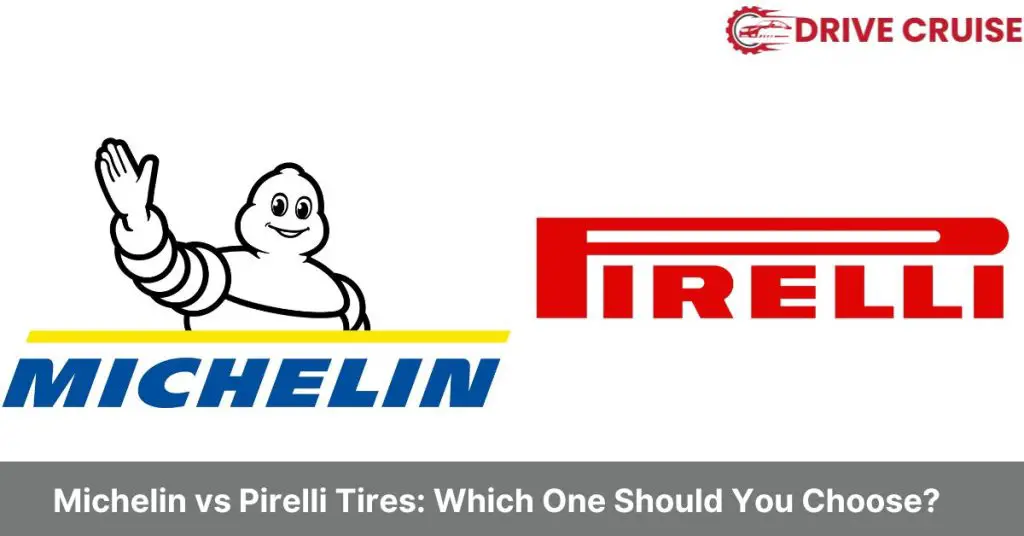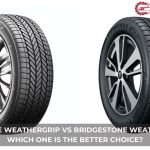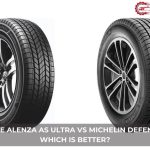When it comes to choosing the right tires for our vehicles, the debate between Michelin and Pirelli tires is as old as time. Both brands boast a rich heritage of innovation, performance, and reliability, making the decision anything but straightforward. We’re all searching for that perfect blend of durability, grip, and comfort, but with so many factors to consider, how do we decide which tire truly suits our needs?
Let’s dive into the world of Michelin and Pirelli, two titans of the tire industry, to uncover what sets them apart. From their humble beginnings to their current status as leaders in tire technology, we’ll explore what makes each brand unique. Whether you’re a speed enthusiast or a daily commuter, understanding the strengths and weaknesses of Michelin and Pirelli tires is crucial in making an informed choice. So, buckle up as we embark on this rubber-meets-the-road journey to discover the best tires for our vehicles.
History and Evolution of Michelin and Pirelli
Diving deeper into our exploration between Michelin and Pirelli tires, we find their histories rich with innovation and advancement. Each brand boasts a legacy that has significantly impacted the automotive world, making them stalwarts in tire manufacturing.
Michelin, founded in 1889 by the Michelin brothers in France, has always been at the forefront of tire technology. They introduced the first detachable pneumatic tire in 1891, which was a revolutionary step forward and set the foundation for future innovations. Over the years, Michelin has been renowned for its commitment to enhancing road safety and performance, creating the first radial tire in 1946, which offered better durability and fuel efficiency compared to traditional tire designs.
Pirelli, on the other hand, was established in 1872 by Giovanni Battista Pirelli in Italy. Initially specializing in rubber and derivative processes, Pirelli quickly shifted its focus to tire production, paving its way to becoming a global leader in the tire industry. Known for combining high performance with style, Pirelli became famous for its “Cinturato” radial tires in the 1950s, which offered improved stability and longevity. The company has also been a prominent supplier in motorsport, especially in Formula One, where its high-performance tires are the current standard.
Throughout their evolution, both Michelin and Pirelli have focused on research and development to introduce innovative tire solutions. Michelin’s commitment to sustainability is evident in its Vision Concept tire, a 3D-printed tire made from bio-sourced and recyclable materials. Similarly, Pirelli has emphasized ‘green performance’, with initiatives aimed at reducing environmental impact while maintaining high levels of performance and safety.
In understanding the history and evolution of Michelin and Pirelli, we appreciate not just their contributions to tire technology but also their commitment to safety, performance, and environmental sustainability. This background lays a solid foundation for us to delve into the nuances of their tire offerings, helping us appreciate the unique qualities each brand brings to the road.
Michelin Tires: Features and Technologies
Transitioning from the rich histories of Michelin and Pirelli, it’s crucial to delve into the specific features and technologies that set Michelin tires apart in the automotive industry. Our focus on Michelin brings to light their commitment to innovation, safety, and sustainability through their advanced tire technologies.
Firstly, we explore Michelin’s patented EverGrip Technology, a groundbreaking development designed to improve tire grip and safety as the tire wears down. This technology involves a unique tread design and compound that enhance wet braking, even after thousands of miles of use. It’s a testament to Michelin’s dedication to safety throughout a tire’s life cycle.
Another notable innovation is the Michelin Primacy Tour A/S tire, which incorporates the brand’s latest advancements in tread compound technology. This tire is engineered for all-season performance, offering exceptional comfort, quiet rides, and fuel efficiency. The Primacy Tour A/S exemplifies Michelin’s focus on delivering a balanced performance for everyday driving.
Michelin also leads in sustainability with its Vision Concept tire. This airless tire made from bio-sourced and recycled materials showcases Michelin’s forward-thinking approach to tire manufacturing. Aimed at reducing the environmental impact, the Vision Concept tire represents a major leap towards sustainable mobility.
Moreover, Michelin’s Pilot Sport Series, especially the Pilot Sport 4S, embodies the brand’s motorsport heritage. These tires blend responsive handling, high-speed stability, and longevity, appealing to driving enthusiasts seeking premium performance and safety.
Michelin’s feature-rich tire lineup, characterized by EverGrip Technology, Primacy Tour A/S, Vision Concept, and the Pilot Sport Series, highlights their emphasis on innovation, safety, and sustainability. Each technology underscores Michelin’s approach to advancing automotive performance while addressing environmental concerns. These attributes not only distinguish Michelin tires in the market but also reinforce the brand’s legacy as a leader in tire technology and design.
Pirelli Tires: Features and Technologies
Transitioning from Michelin’s impressive array of features and technologies, we now delve into what sets Pirelli tires apart in the competitive tire landscape. Known for ‘green performance’, Pirelli integrates sustainability with superior performance, ensuring their tires not only excel in driving conditions but also contribute towards environmental responsibility.
Pirelli’s innovative approach is evident in their P Zero series, tailored for high-performance vehicles, emphasizing grip, precision, and durability. These tires incorporate Pirelli Noise Cancelling System (PNCS) technology, reducing cabin noise for a more comfortable ride.
Sottozero and Winter Sottozero series stand out for winter driving, featuring optimized tread patterns and compounds that maintain flexibility in cold temperatures, enhancing grip and control on snow and ice.
For SUVs and off-road vehicles, Pirelli’s Scorpion range is unmatched, offering robustness and versatility, whether navigating city streets or tackling rough terrain. The Scorpion Verde, part of this range, is particularly noteworthy for its focus on eco-friendliness, made with low-rolling resistance compounds to improve fuel efficiency and decrease CO2 emissions.
Pirelli’s commitment to innovation extends to their use of the Seal Inside technology, allowing drivers to continue their journey even after a puncture, a critical feature for safety and convenience.
Moreover, Pirelli has adapted to the digital age with Cyber Tire technology, providing tires equipped with sensors that gather and transmit vital information about road conditions, tire performance, and wear to the vehicle and driver, ensuring optimized performance and safety.
As we explore Pirelli tires’ features and technologies, it’s clear their dedication to innovation, performance, safety, and sustainability closely parallels their contribution to automotive engineering, leaving an indelible mark on the tire industry.
Key Differences Between Michelin and Pirelli
Exploring the nuances between Michelin and Pirelli tires reveals several key aspects that differentiate these two giants in the tire industry, stemming from their historical roots to their current innovations.
Performance and Technology
Michelin tires stand out for their exceptional grip and durability, largely attributed to their patented rubber compounds and the Michelin Total Performance approach, which emphasizes a balance across multiple performance parameters. Michelin’s innovations, such as the CrossClimate series, cater to drivers seeking versatility and safety in various weather conditions.
Pirelli, on the other hand, shines in the realm of high-performance and luxury automobiles, with its P Zero series being synonymous with sports performance. Pirelli’s dedication to technology is evident in features like the PNCS (Pirelli Noise Cancelling System) and Cyber Tire technology, which enhances driving safety by providing real-time tire data.
Sustainability Efforts
Michelin leads with its commitment to sustainability, focusing on reducing environmental impact through the development of tires made from sustainable materials like bio-sourced and recycled products. Their long-term goal includes significantly increasing the sustainability content in their tires by 2048.
Pirelli places a strong emphasis on ‘green performance’, with a strategy that integrates sustainability into product development, manufacturing, and even in the tire’s lifecycle, aiming to reduce CO2 emissions and improve energy efficiency.
Market Focus and Range
Michelin’s product range covers a wide spectrum, offering solutions for passenger cars, trucks, motorcycles, and even bicycles. They aim to provide tires that enhance fuel efficiency, safety, and longevity, catering to a broad market segment.
Pirelli’s portfolio, while also diverse, is particularly renowned for its focus on premium and high-performance market segments. This includes specialized tires for sports cars, luxury vehicles, and motorsport applications, reflecting their strong presence in Formula One racing, where they are the exclusive tire supplier.
Price Points
Michelin tires are generally perceived as a higher investment due to their long lifespan and performance attributes. This makes them a favored choice for drivers looking for long-term value.
Pirelli tires, while also premium-priced, often appeal to enthusiasts and drivers of high-end automobiles who prioritize performance and brand prestige.
Performance Comparison in Various Conditions
Exploring the performance nuances between Michelin and Pirelli tires across various conditions uncovers their unique engineering feats and how they cater to different driving demands.
Starting with dry conditions, Michelin tires often exhibit excellent grip and stability, attributes that arise from their proprietary rubber compounds and tread designs. This technology ensures that drivers experience precise handling and shorter braking distances when navigating dry pavements. Pirelli tires, in contrast, are crafted with high-performance and luxury vehicles in mind, offering responsive steering and high-speed stability. Pirelli’s focus on dynamic performance translates into tires that excel in maintaining traction during aggressive driving maneuvers.
In wet conditions, both brands showcase remarkable performance, yet with distinct advantages. Michelin’s water-evacuation channels and silica-enhanced tread compounds contribute to superior wet grip and aquaplaning resistance. Drivers can expect confident handling and braking even in heavy rain. Pirelli tires respond to wet roads with advanced tread patterns and materials designed to optimize water displacement. This innovation supports enhanced control and safety during wet driving conditions.
For winter and snow driving, Michelin takes the lead with offerings like the Michelin X-Ice series. These tires are equipped with multi-directional tread designs and Flex-Ice technology, providing improved traction on snow and ice. Pirelli competes with its Winter Sottozero and Scorpion Winter lines, integrating specialized tread compounds and siping techniques to maximize grip and braking efficiency in cold, snowy conditions.
Off-road enthusiasts will find Pirelli’s Scorpion line-up favorable, as it’s engineered for rugged landscapes. These tires boast reinforced sidewalls and aggressive tread patterns for enhanced durability and traction off the beaten path. Michelin, while not as extensively focused on off-road capabilities, offers the Michelin LTX series, which delivers reliable performance on mixed terrains through robust construction and versatility.
While Michelin shines with its emphasis on grip, durability, and versatile performance across a wide range of conditions, Pirelli stands out in the high-performance and luxury segments, with a strong focus on providing responsive, dynamic driving experiences.
Consumer Reviews and Industry Ratings
Moving seamlessly from their historical significance and technological innovations, we now delve into consumer reviews and industry ratings for Michelin and Pirelli tires. These aspects are vital as they reflect real-world experiences and professional assessments.
Michelin tires often receive praise for their long-lasting tread life, exceptional grip, and stability on wet and dry surfaces. Consumers appreciate Michelin’s focus on safety and performance, which is evident in their positive feedback across various platforms. Industry ratings consistently place Michelin tires at the top, particularly for their all-season and touring tires. For instance, numerous Michelin models have received high scores from consumer reports and industry tests, affirming their superior quality.
Pirelli tires are celebrated for their high-performance capabilities, especially in the luxury and sports segments. Customers rave about Pirelli’s ability to enhance driving dynamics, providing a thrilling ride without sacrificing comfort. The feedback highlights Pirelli’s success in delivering tires that meet the demands of performance enthusiasts and luxury vehicle owners alike. In industry ratings, Pirelli tires stand out for their performance-oriented designs, often fetching premium ratings in tests focused on high-speed stability and cornering precision.
Both brands boast impressive accolades from automotive publications and independent testing organizations. For example, Michelin’s Pilot Sport 4S and Pirelli’s P Zero tires have been featured prominently in comparison tests, earning top marks for their respective strengths in performance and durability.
In essence, consumer reviews and industry ratings for Michelin and Pirelli tires underline a shared commitment to excellence, albeit with different focal points. Michelin earns accolades for its all-around performance and long-term value, while Pirelli captures attention for its superior handling and performance prowess. This valuable feedback from drivers and experts alike ensures that both brands continue to innovate and cater to the evolving needs of the automotive world.
Conclusion
We’ve taken a deep dive into the world of Michelin and Pirelli, uncovering what sets each brand apart. It’s clear that Michelin shines with its commitment to sustainability, long tread life, and all-season performance. On the other hand, Pirelli captures the essence of luxury and sports driving with its focus on high performance and dynamic handling. Both brands stand tall in their unique strengths, making the choice between them more about personal preference and specific driving needs. Whether it’s the durability and all-around excellence of Michelin or the precision and agility of Pirelli that appeals to you, you’re choosing quality and innovation. Happy driving!
Related Posts:
- Achilles Tires Review: Are They Worth the Investment?
- Can Teslas Use Gas? Exploring the Fuel Options for Electric Cars
- Continental vs Pirelli Tires: Which One Should You Choose?
- Honda Pilot Emissions System Problem: Causes and Solutions
- FCM Service Required: How to Get Started with Firebase Cloud Messaging
- Honda Pilot Keyless Start System Problem: Troubleshooting Tips
- How Many Wheels Are in the World: A Fascinating Look at Global Transportation
- Hyundai Check BSD System: How to Ensure Your Safety on the Road
- Michelin vs Pirelli Tires: Which One Should You Choose?
- Chevy Volt P1E00: What You Need to Know
- Pirelli vs Continental Tires: A Friendly Comparison
- Toyo Open Country H T II Review: A Friendly Look at Its Features and Performance
- Yokohama Geolandar MT G003 Review: A Friendly Guide











